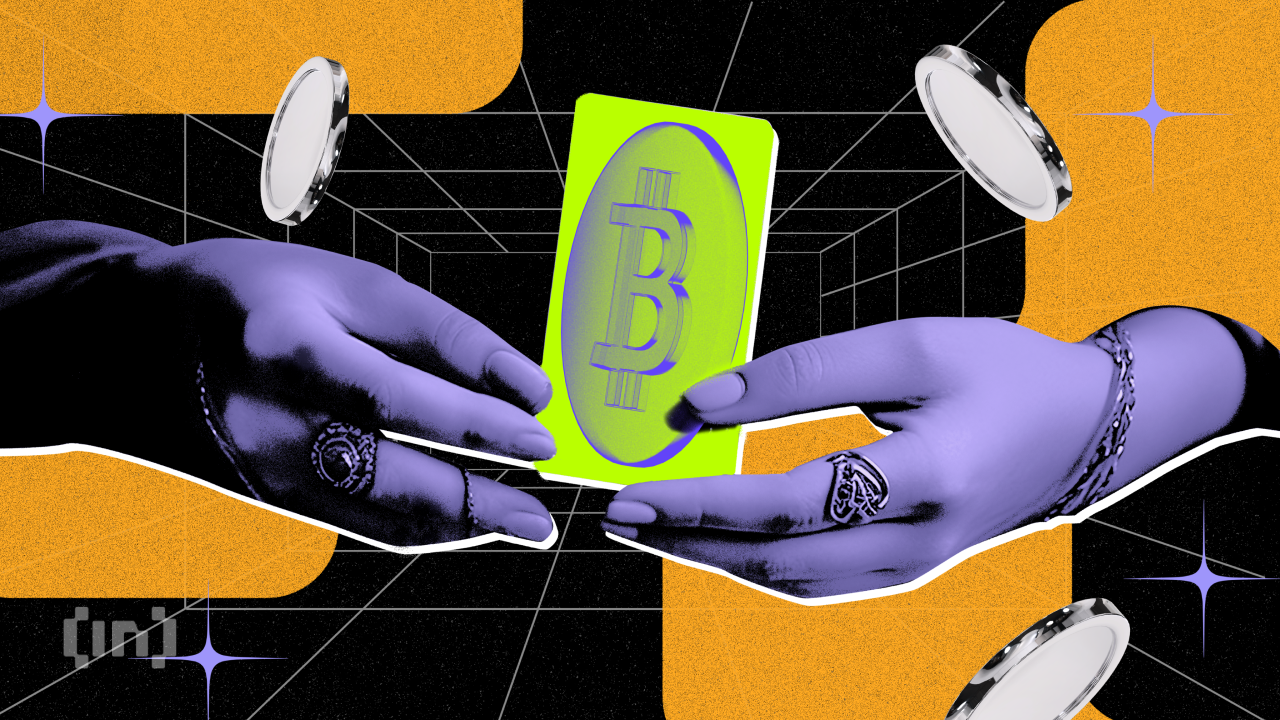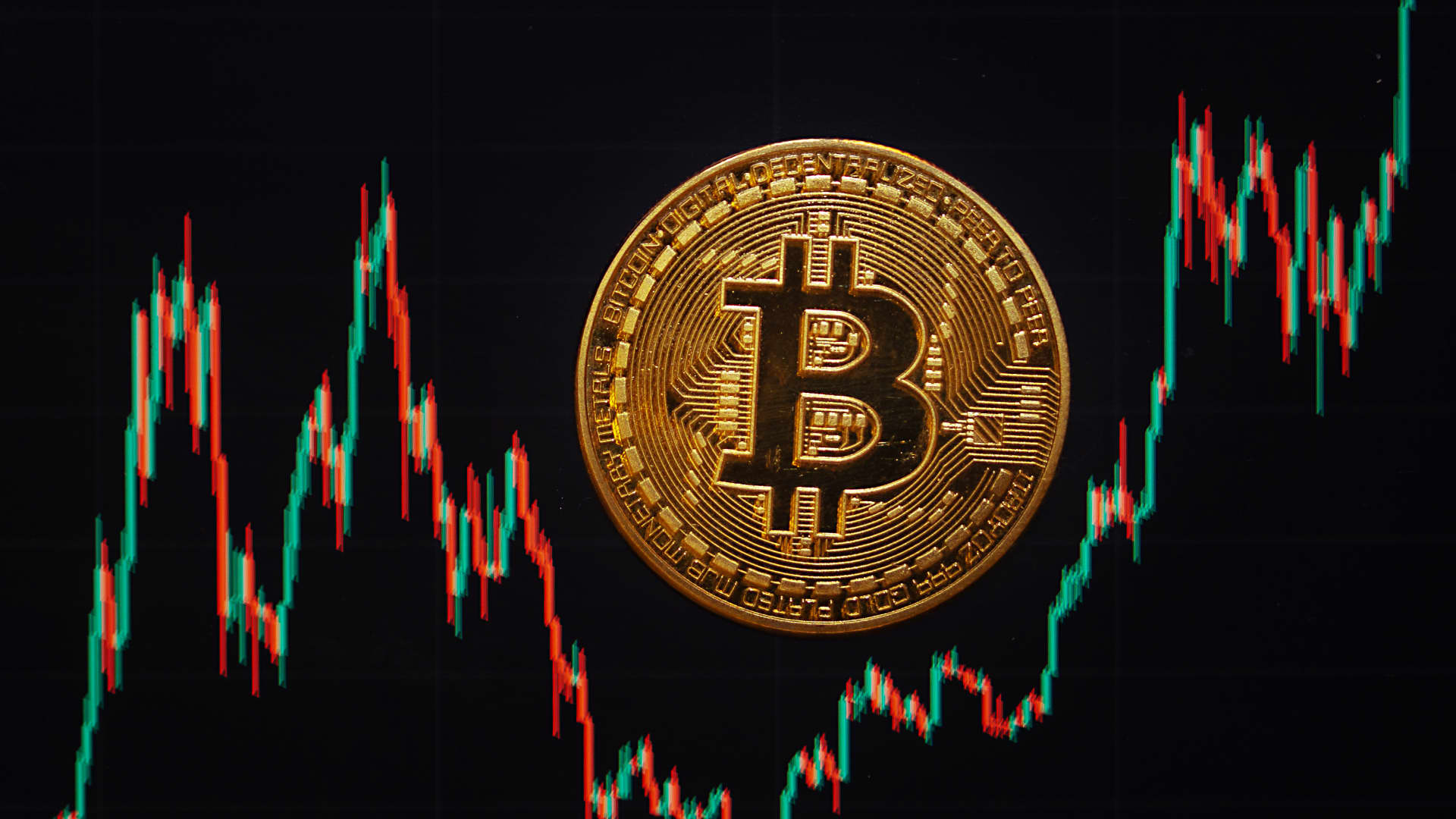Bitcoin
Chinese Firm SOS Makes $50 Million Worth of Bitcoin Purchase

Chinese data mining firm SOS Limited’s board of directors has approved a $50 million investment in Bitcoin. The decision was shared on November 27 through the company’s official press release.
SOS is planning to use several trading strategies for this investment. This will include quantitative trading, direct investment, and arbitrage strategies.
SOS Stock Surges 100% Following its Bitcoin Purchase
This announcement comes as Bitcoin has started to recover largely from its earlier liquidation. BTC fell below $91,000 yesterday, its lowest in a week. However, the bullish cycle regained momentum as the largest cryptocurrency surged back to $96,000 today.

Following this news, SOS Limited’s share prices jumped nearly 100% on Wednesday, November 27. The cryptocurrency’s recent surge is driving increased participation from investors globally. SOS Limited’s Bitcoin purchase aligns with the growing enthusiasm around digital assets.

The company views Bitcoin as a key digital asset with strategic importance on a global scale. SOS Limited supports the notion that Bitcoin could play a pivotal role in global reserve strategies.
“We believe this investment plan will further enhance the Company’s overall competitiveness and profitability in the digital asset investment sector,” said Yandai Wang, Chairman and CEO of SOS.
Public Companies Are Extremely Bullish on BTC
Meanwhile, Bitcoin acquisitions have been surging across publicly traded companies in recent months. Earlier this week, MicroStrategy completed another round of Bitcoin purchases worth $5.4 billion. This was the third consecutive BTC purchase from Michael Saylor’s firm in November alone.
So far, the firm has acquired over $16 billion worth of BTC this year, extending its lead as the largest Bitcoin holder across the industry.
Bitcoin’s recent highs have also impacted Microstrategy’s stock performance. MSTR surged by nearly 450% YTD, becoming one of the top 100 public companies in the US.
Also, crypto miner Marathon Digital recently raised $1 billion through a convertible senior notes offering. As BeInCrypto reported earlier, the lion’s share of this fund will be used to buy more Bitcoin.
Despite Bitcoin reaching $99,000 in the current cycle, these major firms seem extremely bullish on BTC’s long-term price. Earlier this week, Pantera Capital projected that the cryptocurrency will reach $740,000 by 2028.
The firm previously projected Bitcoin to be around $117,000 by August 2025, and we’re not far from this mark.
Disclaimer
In adherence to the Trust Project guidelines, BeInCrypto is committed to unbiased, transparent reporting. This news article aims to provide accurate, timely information. However, readers are advised to verify facts independently and consult with a professional before making any decisions based on this content. Please note that our Terms and Conditions, Privacy Policy, and Disclaimers have been updated.
Bitcoin
Where’s The FOMO? Bitcoin Retail Crowd Yet To Jump In, Analyst Says

From its peak of $99,531 on November 23rd, Bitcoin, the world’s leading digital asset, is now trading at the $92k to $93k level, prompting many to speculate that its historic price run has ended. However, for CryptoQuant CEO Ki Young Ju, the alpha coin’s current price action isn’t a cause for concern.
In a Twitter/X post, Ki Young shared that Bitcoin’s retail investors are not yet in “FOMO” (fear of missing out) mode. The current retail action, he says, doesn’t indicate signs of excessive excitement or panic.
Ki Young explained that there’s still a surge of trading activities across markets for spots, futures, and exchanges.
Retail Investors Feeling The ‘FOMO’ In Meme Coins?
In a Twitter/X post last November 26th, Ki Young argued BTC retail investors are not yet feeling the excitement of missing out. Market indicators, he says, point to neutral market sentiment, the same position it has held since April when the top digital asset traded at $64,000.
#Bitcoin retail investors aren’t in FOMO yet. pic.twitter.com/DiGcChyNWt
— Ki Young Ju (@ki_young_ju) November 26, 2024
During the last Bitcoin bill run, the retail market’s FOMO reached its high in January 2021 when the asset was trading over $30,0000, pushing the price to an all-time high of $69,000.
Although Bitcoin retested the $100k mark many times last week, market observers say that retail investors still need to invest heavily.
Recent Price Dips Due To Macro Environment
According to observations from QCP Capital, Bitcoin’s successive price dips can be attributed to the existing macro environment. Plenty of factors now prevent Bitcoin from continuing its push towards $100k.
According to the QCP Capital, Bitcoin is facing pressure from the possible release of economic data like FOMC minutes and the PCE report. Also, Bitcoin was overbought following a whirlwind price action after the US elections.
No Need To Worry?
However, QCP Capital pointed out that it is not a cause for concern and that sentiment for digital assets remains bullish.
Based on on-chain data, millions of USD were liquidated in the last 24 hours, and about $438 million in ETF outflows were recorded last November 25th.
2/ No immediate catalysts: With U.S. holidays approaching and major economic data like tonight’s FOMC minutes and tomorrow’s PCE report, the market lacks momentum to push #BTC toward $100K. #BTC was extremely overbought post-election, making a cooldown inevitable.
— QCP (@QCPgroup) November 26, 2024
For the CryptoQuant CEO, market participation isn’t slowing down. According to market indicators, trading is booming in all exchanges, markets, and tickets. Based on CryptoQuant’s analysis, retail investors feel the “FOMO” on meme coins, particularly Dogecoin.
Featured image from CNBC, chart from TradingView
Bitcoin
Pantera Capital Bitcoin Fund: $740,000 Prediction by 2028

Pantera Capital has forecasted that Bitcoin could hit $740,000 by April 2028. The firm recently announced a milestone for its Bitcoin Fund, which has achieved a remarkable 1,000x return.
The fund’s lifetime performance now stands at 131,165%, net of all fees and expenses.
Launched in 2013, Pantera’s Bitcoin Fund was among the first investment vehicles in the US to offer exposure to Bitcoin. At that time, Bitcoin was priced at $74. The firm capitalized on this and acquired 2% of the global Bitcoin supply.
However, BTC reached the $99,000 mark earlier this month, which means Pantera’s return on the initial 2013 investment is currently worth over 1,000%.
“Bitcoin dominates cash, electronic fiat money, gold, bearer bonds, large stone discs, etc. It can do all of the things that each of those can. It’s the first global currency since gold. It’s the first borderless payment system ever,” Pantera Capital’s Dan Morehead wrote in the latest statement.
Pantera Capital previously projected Bitcoin’s price to reach $117,000 by 2025.
Meanwhile, Pantera has been exploring new crypto avenues outside of Bitcoin. The firm’s new venture, Pantera Fund V, aims to diversify its portfolio with investments in blockchain assets.
The fund has been looking at private tokens and opportunities such as locked Solana tokens from FTX’s estate. Pantera also raised funds earlier in June to expand its holding in Toncoin.
Bitcoin Facing Correction After Month-long Rally
Despite reaching record highs in November, Bitcoin’s price has dipped 6% in the past few days. Weaker demand among US investors has contributed to this decline, as highlighted by the Coinbase Premium Index.
At the same time, Bitcoin ETFs have seen fluctuating demand. On November 25, ETFs recorded a net outflow of $438.38 million after five consecutive days of inflows that totaled $3.5 billion.

Although Bitcoin’s realized profit dropped from $10.58 million to $1.58 million on Monday, this reduction in selling pressure could indicate room for future price growth.
Moreover, the average holding time for Bitcoin increased by 65% over the past week, suggesting stronger conviction among investors and reinforcing a positive outlook.
While the market remains volatile, Pantera’s long-term prediction reflects confidence in Bitcoin’s growth potential as the leading cryptocurrency continues to attract institutional interest.
Disclaimer
In adherence to the Trust Project guidelines, BeInCrypto is committed to unbiased, transparent reporting. This news article aims to provide accurate, timely information. However, readers are advised to verify facts independently and consult with a professional before making any decisions based on this content. Please note that our Terms and Conditions, Privacy Policy, and Disclaimers have been updated.
Bitcoin
The Future of Decentralized Lending?

According to the World Bank, 1.4 billion adults around the world remain unbanked. The global financial system, despite its unbelievably vast infrastructure, falls short of serving the global population equitably on many counts.
For many, the glittering promise of financial freedom is not merely a matter of surviving the rat race but also a tale of inflation and documentation.
Bitcoin-Backed Credit: A Lifeline for the Unbanked Globally
Millions of people remain underbanked or entirely unbanked due to strict credit requirements, high fees, and limited accessibility. From Palestinian refugees with no proof of citizenship, single women with no employment contract in Egypt, or the countless people facing exorbitant inflation rates of over 120% in Argentina.
During the 2008 financial crisis, countless individuals in the US lost their homes due to predatory lending practices, showcasing the system’s inherent vulnerabilities. Even today, high inflation erodes savings in fiat currencies, leaving consumers with fewer options to preserve their wealth.
Meanwhile, small businesses worldwide face rejection from banks due to rigid creditworthiness standards. One may even argue that money is perhaps the most violent political tool in the weaponry bag of the powers that be.
This gap in accessibility and fairness reveals the need for alternative financial systems. Bitcoin-backed credit offers a viable solution, overcoming both the political agendas and the economic limitations that keep poor people poor.
What Are Bitcoin-Backed Credit Systems?
Bitcoin-backed credit systems allow borrowers to use their BTC holdings as collateral to secure loans without selling their assets. These systems function similarly to secured loans, where a borrower pledges an asset to access liquidity.
If the borrower fails to repay, the lender liquidates the collateral to recover the funds. Unlike traditional loans, these systems do not require credit scores or extensive documentation, making them more accessible to crypto holders.
“High inflation, currency devaluation, and low trust in centralized banks could drive demand for Bitcoin-backed loans. Bitcoin’s stability and decentralized nature make it attractive in volatile economies, and DeFi platforms offer lower barriers and better terms compared to traditional lending,” Kevin Charles, co-founder of The Open Bitcoin Credit Protocol told BeInCrypto in an interview.
The market for Bitcoin-backed credit has grown, with key players like BlockFi, Ledn, Celsius, and Nexo leading the way. These platforms allow users to retain exposure to BTC while accessing fiat or stablecoin liquidity. The simplicity and appeal of these systems have fueled their adoption in recent years, one reason why they have faired peacefully throughout bear markets.
One major advantage of BTC-backed credit is the ability to retain exposure to Bitcoin’s price appreciation. Borrowers can unlock liquidity without selling their BTC, allowing them to benefit from potential long-term gains.
Additionally, Bitcoin-backed loans act as a hedge against inflation by offering an alternative to the ever-devaluing fiat currencies. A crypto holder in Argentina, for example, would be able to secure themselves against their dwindling national currency and even make extra cash.
According to Bankrate, USD now has an inflation rate of 2.4%, which is notably the lowest it has been since February 2021. Meanwhile, BTC has an inflation rate of just 1.7%.

BTC-backed systems also promote financial accessibility. Unlike traditional banks, which require stringent credit checks, Bitcoin-backed credit platforms primarily assess the value of the collateral. This approach opens the door to individuals in regions with limited banking infrastructure, offering a lifeline to the unbanked.
For those who hold true to the ethos of decentralization, global inclusion is the real selling point. Bitcoin-backed credit has the potential to provide financial services to these populations, bridging the gap left by traditional systems. Central banks and global financial institutions remain privy to the whims and shifts of the ever-changing political playground.
In a nation like Lebanon, whose residents primarily transact in USD due to its effectively dead LBP, citizens were barred from withdrawing their own dollars when the central bank faced a dollar shortage crisis. For reference, one USD equals 89,550 LBP. In neighboring Egypt, rumors of impounded USD accounts also began circulating before being denied by central bank officials.
“Bitcoin-backed credit operates on a global, decentralized network, meaning access is not dependent on income, location, or credit history. By using Bitcoin as collateral, anyone holding the asset can access loans without traditional gatekeepers. Early DeFi platforms show increasing adoption in regions with limited banking access, highlighting the potential for financial inclusion,” Charles added.
However, even with all of these advantages, duality is the law of the universe. Bitcoin-backed credit systems are no cure-all solution; they carry significant risks.
The most glaring is Bitcoin’s price volatility. A sudden drop in BTC’s value can trigger margin calls, forcing borrowers to either add collateral or face liquidation. During the crypto market crash in 2022, countless borrowers lost their collateral as prices plummeted. According to Charles, there are ways to mitigate volatility.
“Volatility is managed through over-collateralization and automated liquidations. By requiring more collateral than the loan value, platforms create a buffer against price drops. Additionally, real-time monitoring ensures loans are adjusted to market conditions, maintaining stability even during price crashes,” Charles added.
The Three-Eyed Trojan Horse: Centralization’s Re-emergence
Even so, Bitcoin-backed credit systems have socio-economic implications that warrant examination. The first is that while these platforms democratize access to credit for crypto holders, they risk creating new financial gatekeepers. Wealthy crypto investors, or “crypto whales,” stand to benefit the most, while average users with limited holdings may find themselves excluded.
Whales, or addresses holding more than 100,000 BTC, hold 21% of the total Bitcoin supply. This dynamic means perpetuating wealth concentration within the crypto space as well. If that does happen, we can wave goodbye to the promise of inclusion.

The second concern is traditional financial institutions. They are increasingly infiltrating the Bitcoin-backed credit market through acquisitions and regulatory influence.
Banks like Goldman Sachs and JPMorgan have begun exploring crypto-backed lending, signaling a convergence of decentralized and traditional finance. In November, Bloomberg reported that Goldman Sachs is preparing to launch a new company focused on digital assets. While these developments bring legitimacy, they also raise concerns about co-opting Bitcoin’s decentralized ethos.
Then enters the third and final Trojan horse: government oversight. It presents both opportunities and challenges for Bitcoin-backed credit systems.
Regulation can legitimize these platforms, ensuring consumer protection and stability. However, excessive regulation could stifle innovation and compromise decentralization.
For example, the European Union’s MiCA framework has introduced clarity but also imposed stringent compliance requirements, causing friction within the crypto industry. Binance, the world’s largest crypto exchange by trading volume, had to disable copy trading services for its European users in June after MiCA was announced.
Another issue that may impact accessibility is know-your-customer (KYC) standards, which may hinder those who rely on crypto wallets because they lack sufficient personal documentation. Policymakers often argue that platforms without strict KYC oversight risk assisting criminals in money laundering operations. In 2023, Turkiye even rolled out a new set of crypto laws aimed at tightening up KYC standards.
“We’re witnessing a re-centralization of a system designed to be free. The challenge is finding balance without diluting Bitcoin’s core principles,” Charles posed.
Platforms like Aave and Sovryn exemplify decentralized approaches to Bitcoin-backed credit. These systems rely on smart contracts to automate transactions, reducing the need for intermediaries and ensuring transparency. However, decentralization comes with its own challenges, including scalability, security vulnerabilities, and regulatory gray areas.
Still, success stories exist. Borrowers have used Bitcoin-backed loans to fund businesses, pay medical bills, or navigate economic uncertainty without selling their BTC. Conversely, others have faced significant losses due to liquidation during market downturns, highlighting the high stakes of these systems.
In conclusion, Bitcoin-backed credit represents both a financial revolution and a cautionary tale. Its future hinges on its ability to scale, remain accessible and adhere to Bitcoin’s ethos of decentralization.
As traditional finance enters the space and regulatory frameworks evolve, the challenge will be maintaining the balance between innovation and inclusivity. Whether these systems democratize finance or merely shift the gatekeeping remains to be seen.
Disclaimer
Following the Trust Project guidelines, this feature article presents opinions and perspectives from industry experts or individuals. BeInCrypto is dedicated to transparent reporting, but the views expressed in this article do not necessarily reflect those of BeInCrypto or its staff. Readers should verify information independently and consult with a professional before making decisions based on this content. Please note that our Terms and Conditions, Privacy Policy, and Disclaimers have been updated.
-

 Altcoin23 hours ago
Altcoin23 hours agoAnalyst Says the Dogecoin Price Will Keep Outperforming Bitcoin While This Altcoin Aims for a 43,209% Rally
-

 Regulation23 hours ago
Regulation23 hours agoUS Court Rules Tornado Cash Smart Contracts Not Property, Lifts Ban
-

 Market22 hours ago
Market22 hours agoSolana (SOL) Price Correction Threatens Death Cross Formation
-

 Market24 hours ago
Market24 hours agoMetaverse Crypto Developments Boost Engagement in November
-

 Regulation24 hours ago
Regulation24 hours agoDonald Trump Plans To Give CFTC Oversight of $3T Crypto Market
-

 Market23 hours ago
Market23 hours agoKraken Closes NFT Marketplace Amid Market Challenges
-

 Market21 hours ago
Market21 hours agoDogecoin (DOGE) Price Weakens as Bears Take Control
-

 Altcoin21 hours ago
Altcoin21 hours agoAnalyst Reveals The ‘Truth’ Behind This Dogecoin Price Rally





















